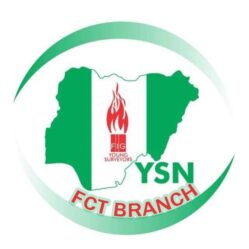Integrating geospatial data with other construction management systems involves combining geographically referenced information like site topography, utility lines, and property boundaries with project data like schedules, resource allocation, and Building Information Modeling (BIM). This allows for a comprehensive view of a construction project, enabling better planning, decision-making, and monitoring throughout the project lifecycle.
Some of the key benefits are:
Enhanced Data Sharing and Management: Combining Geographic Information Systems (GIS) and BIM facilitates efficient data sharing and management, improving collaboration among stakeholders.
Improved Decision-Making: The integration supports better decision-making by providing detailed spatial analysis and visualizations, aiding in site selection, design, and resource allocation.
Efficient Project Management: Integrating geospatial data into project management enhances efficiency by providing spatial information that informs decision-making throughout the project lifecycle. Examples; it optimizes site selection, resource allocation, progress tracking, risk management, logistics, and coordination with BIM.
Advanced Visualization: The integration of GIS with the Digital Twin concept enables precise management of construction projects and advanced prospective insight.
Improved Coordination: Centralized access to geospatial and project data enhances team collaboration.
Real-Time Insights: Continuous updates from integrated systems allow faster, more informed decision-making.
Cost Savings: Optimized resource allocation and logistics reduce expenses.
Sustainability: Minimizing inefficiencies lowers carbon footprints by optimizing fuel use, reducing material waste, and preventing unnecessary equipment operation. Fuel consumption is reduced through GIS-based route planning, ensuring efficient material transportation. Material waste is minimized with precise resource planning using BIM and geospatial analysis. Unnecessary equipment usage is avoided through real-time monitoring, ensuring machines run only when needed. By integrating geospatial data with construction management systems, projects become more efficient, cost-effective, and environmentally sustainable.
Key Aspects of Integration
GIS and BIM Integration
️ Purpose: Combine spatial data from GIS with detailed building design and construction data in BIM.
️ Applications:
➡️ Site analysis and 3D visualization.
➡️ Clash detection between site constraints and design models.
➡️ Enhanced facility and infrastructure lifecycle management.
️ Example Tools: Autodesk InfraWorks, ArcGIS GeoBIM.
GIS and ERP (Enterprise Resource Planning) Integration
️ Purpose: Link geospatial data with resource and project management systems to optimize logistics and budgeting.
️ Applications:
➡️ Real-time material tracking and inventory management.
➡️ Cost monitoring tied to specific project locations.
➡️ Scheduling resource allocation based on geospatial data.
Internet of Things (IoT) and Geospatial Data
️ Purpose: Integrate IoT sensor data with GIS for real-time monitoring and operational insights.
️ Applications:
➡️ Dynamic equipment and vehicle tracking.
➡️ Monitoring environmental conditions like weather or air quality.
➡️ Real-time adjustments to construction schedules and workflows.
Geospatial Data in Digital Twins
️ Purpose: Combine GIS and construction management systems to create a digital twin of the project.
️ Applications:
➡️ Simulating construction workflows.
➡️ Predicting project outcomes based on spatial and operational data.
➡️ Improving maintenance and operations of completed structures.
For a comprehensive understanding of how Integrating Geospatial data with Construction management systems works, visit:
Geospatial Technologies in construction: Innovation and Efficiency
https://www.ascendpmsolutions.com/blog/integrate-geospatial-data-into-project-management?utm_
Signed:✍️
a. Surv. Uju O. IZUEGBU, MNIS
Chair: YSN FCT
b. Moyinoluwa Olajide
Head: Education Committee YSN-FCT
Announcer:
c. Surv. Udeagbala O. Ruth MNIS
Ass Secretary: YSN-FCT
Member: Education Committee YSN-FCT


